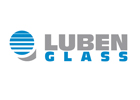In this blog, we share some practical tips for optimizing energy consumption in automotive glass production. From preprocessing to final inspection, there is huge potential every step of the way.
The recent energy crisis has made energy conservation and efficiency top priority. New regulations and carbon-neutrality commitments are pushing organizations to transform their use of energy in all areas of operations. Like everyone else, automotive manufacturers have been forced to accelerate the move toward carbon neutrality. And saving energy in automotive glass production is just as important as for all the other parts.
Tips for saving energy in different process steps
In glass preprocessing
Preprocessing consumes far less energy than other steps in automotive glass production. However, every saving counts. So, if there is a way to optimize energy efficiency during preprocessing, we should definitely know about it.
Unlike other glass production steps, this one has good potential to help you recoup some energy. Since glass preprocessing typically consists of lots of movements, when the tools are decelerated by electric motors, it’s a good moment to capture energy and feed it back into the grid.
With that said, equipment with a lighter design of moving parts and energy capture options can save you up to one-third of the energy required by more traditional preprocessing machines.
For further energy savings, it’s important to reduce material waste in this step of the process. Here, modern glass positioning applications can help achieve consistent quality and less scrap during production.
In glass bending and tempering
Bending and tempering are by far the most energy-intensive processes in automotive glass production. Therefore, they also have the biggest potential for a factory-wide cost-reduction impact.
One of the easiest ways to optimize energy consumption in glass tempering is to load the furnace up to its maximum. Unfortunately, this is often too challenging to achieve.
Convection heating technology offers a solution to this. Convection follows the glass through the heating cycle, only releasing as much heat as is needed for any specific load. This means even with low bed utilization rates, savings are high.
On top of that, convection ensures better heating control and higher performance.
In glass bending
In automotive glass bending, there are many things to consider when it comes to improving energy efficiency.
First, heating technology is key. Here again, it’s good to remember that convection heating has a better heat transfer rate than radiation heating. In turn, targeted and efficient heat transfer means less energy is lost during the process.
In addition, convection provides uniform heating of both clear and printed surfaces. When windshields and sunroofs are produced, convection makes it possible to minimize the number of old-fashioned reflection plates, resulting in further energy savings per unit produced.
Second, convection heating cuts back on the need for extra assets in tooling, such as suction plates or radiation shields that are traditionally needed to compensate for black print overheating. Therefore, tooling weight and energy consumption decreases.
Third, size matters. It makes sense to have just the right chamber size for the market you serve. An oversized chamber means more energy than necessary is used.
Fourth, insulation rules. It’s good to make sure that the wagon frame is well insulated. This way, less steel mass will be uselessly heated in each cycle.
Fifth, a nice design is not just for show. Any design needs to be backed by solid strategic thinking. For instance, new-generation heaters fitted in grooves in the furnace chamber form an ideal reflecting surface for radiation, making the heating process much more efficient. In principle, they enhance the focus of the heat and minimize radiation scatter.
Plus, if the design of your line supports natural cooling, this gives you several additional ways to save energy. For example, it takes less time to reheat the wagon for the next cycle if the line allows for side unloading. The glass can be unloaded at higher temperatures, and the wagon doesn’t need to go through complete cooling.
Sixth, lightweight but robust molds make a difference. The lighter the molds, the less energy is required for the process. Because of this, mold-making training shouldn’t be neglected.
In glass lamination
In windshield and sunroof lamination, de-airing lines with vacuum rings are of help. In these systems, the mass of tooling – and consequently, the energy consumption – is very low compared to vacuum bag systems.
Summary
As you can see, just a bit of training on best practices may do the trick in decreasing your ever-rising energy bills. But for even more measurable results, upgrading the existing machines with more advanced technology is the way to go. After all, investments like these not only lead to immediate cost reductions, but in the long run, they also contribute toward sustainable business practices targeting climate change mitigation.

























